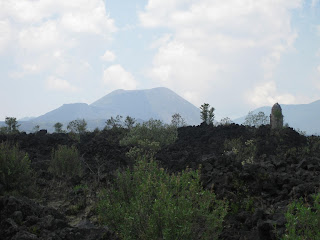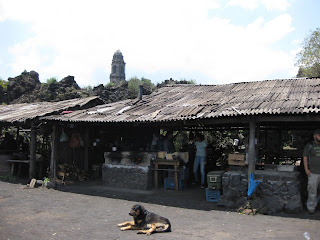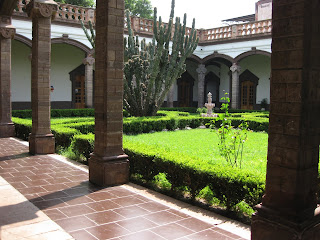One May Sunday evening, among the food
stalls and children’s amusements in our local plaza, Jan and I met the
candidate for the federal congress of the MORENA party, Yolanda Guerrero
Barrera. We wished her good luck, but I assumed that in this conservative,
deeply Catholic, part of Michoacán she could not win. After all, Zamora had
long been a bastion of the conservative PAN (Partido Acción Nacional). I was
wrong: Yolanda’s Facebook page now proudly declares her to be the representative
of the 5th District of Michoacán. Her rival, Sergio Flores, the PRI
candidate, received 12,222 votes. Yolanda’s share of the vote was 49.6%.
Yolanda was not alone in her triumph.
MORENA won 15 of the 24 seats of the state congress, including Zamora where the
new congresswoman is Teresa Mora. PAN won the other nine seats. The PRI, which
had run the state for much of the 20th century could not win a
single district. The PRI fared no better in the election of a new federal
senator. Toño Ixtlahuac, whose retouched photo smiled at us from numerous
billboards, was defeated by Antonio García Conejo, a member of the Partido de
la Revolución Democrática (PRD: Revolutionary Democratic Party) allied with the
PAN and Movimiento Ciudadano (Citizen’s Movement). García Conejo made his name
by stripping off his clothes in the congressional chamber during the debate on
energy reform, a policy designed to end the monopoly of the state petroleum
company, PEMEX.
In Zamora, the new Presidente Municipal
(mayor) is another MORENA candidate Martín Samaguey Cárdenas, who received 35%
of the votes. He has promised to reduce municipal salaries, including his own
by 50%. The municipal government will be responsive, with staff who are honest
and committed to helping the citizens of Zamora. His immediate actions include
buying 40 dialysis machines, and establishing a refuge for the homeless and a shelter for street
children.
The story was rather different in Zamora’s
smaller neighbour, Jacona. There Adriana Campos Huirache of the PRI received
7,512 votes, enough for her to become the first female Presidenta Municipal. Adriana
has held several positions in the municipal government and was Jacona’s
representative in the state congress.
The elections that gave Yolanda her seat
in the legislature in Mexico City, were truly momentous. For a century Mexico
was ruled by the PRI (or its predecessors), with a 12-year interlude from
2000-2012 when Mexicans elected two Presidents of the PAN, Vicente Fox and
Felipe Calderón. It is quite possible that the outgoing president, Enrique Peña
Nieto, may be the last PRI politician to hold the highest office. MORENA, led
by Andrés Manuel López Obrador (known as AMLO) crushed the PRI’s candidate, José
Antonio Meade Kuribreña, and the PAN’s Ricardo Anaya. Some 47 million Mexicans
voted on 1 July and 53% of them (24.9 million) voted for AMLO. His predecessor
received the votes of 15.9 million.
Eight of Mexico’s 31 states elected
governors on 1 July: four of the states were won by MORENA, 4 by Pan or a party
allied with PAN, none by the PRI. In addition, the new MORENA head of government
in Mexico City (the most populous place in all of Mexico) is Dr Claudia
Sheinbaum, by training a physicist and energy engineer (she received 48% of the votes). And it seems that
AMLO’s colleagues will have a majority in both the Federal Congress and Senate.
Since the end of the PRI’s one-party rule, no president has held in his hands
so many of the levers of power.
All of this is an enormous change in the
politics of Mexico. The real question is what it all means. AMLO ran on
promises to end corruption and to improve the lot of Mexico’s poor. He promised
respect for human rights and to combat violence. Concerning, public safety, AMLO declared that
the armed forces should not be deployed in “civilian functions” nor to suppress
popular movements. The programme is expressed in quite general terms. We must
wait to see what it actually means and how he intends to implement it. Those of
you who can read Spanish will find the MORENA programme at: https://lopezobrador.org.mx/programa-del-movimiento-regenracion-nacional/
The response of the Mexican people is a
huge cry of frustration and despair, directed against parties that have not
effectively addressed Mexico’s many problems. The desire for change combined
with a large majority of the popular vote, should enable AMLO to act
decisively. It is inconceivable that the problems can be addressed in one
six-year term, but perhaps AMLO can make a positive start on which his
successors can build. The danger is that he has raised expectations that he may
severely disappoint.
Finally, you may have noticed that several
of the elected officials mentioned in this bulletin are women. Mexico has yet
to elect its first female president (but then this is also true of its northern
neighbour), but women hold political office from humble municipalities like
Jacona to ministerial positions in Mexico City.
Lastly, since this is definitely my final
Mexican bulletin, I hope I have told you enough of Mexico’s many wonders and
its people to entice a few of you to visit the country. If you would like tips
about where to go (or, alas, where not to go) feel free to ask me.



















































